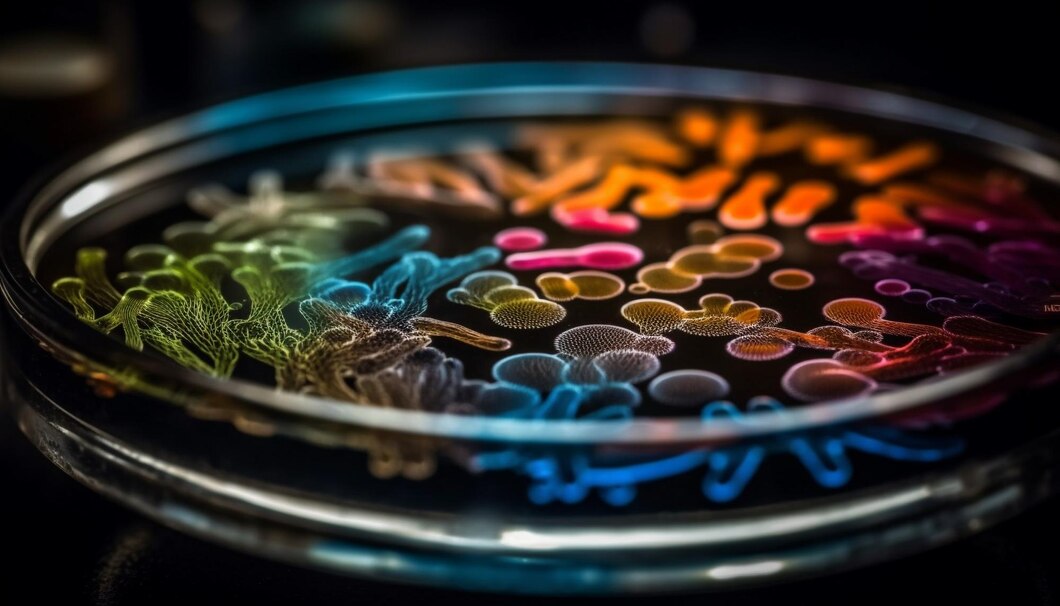The Global Aptamers Market is expected to witness a high double-digit growth rate by 2027. The growth of the aptamers market is driven by the increasing incidences of chronic and genetic disorders, rising adoption of aptamers in drug discovery and development, growing awareness about their advantages over antibodies, and a surge in aptamer’s R&D investments by pharmaceutical and biotechnology companies.
Aptamers are short, single-stranded DNA or RNA molecules that can bind to specific target molecules, such as proteins or small molecules, with high affinity and specificity. They have various applications in various fields, including diagnostics, therapeutics, and research. They possess the remarkable ability to bind with exceptional affinity and specificity to a specific target, often likened to “artificial antibodies.” The selection process for aptamers involves an iterative in vitro method that alternates binding and amplification steps, to identify aptamers, from a large oligonucleotide library, encompassing distinct sequences. During this process, the target is mixed with the library, and a partitioning step is executed to separate target-bound sequences from those that remain free. Various techniques, including filtration, chromatography, and centrifugation, are employed for this partitioning. The sequences bound to the target are subsequently PCR-amplified, and the resulting pool is once again mixed with the target, this time with increased selection pressure. This repetitive procedure is conducted multiple times, leading to the survival of the most potent binders from among millions of sequences. Aptamers are then identified through sequencing.
Click below below to download sample report
Aptamers in Biotechnology and Medicine: A Driving Force for Advancements
The growth of the aptamers market can be attributed to several key factors. They are extensively employed in biotechnology and pharmaceutical research, fueling advancements in drug discovery and development, diagnostics, and therapeutic interventions. Diagnostic and pathology laboratories favor the utilization of aptamer-based diagnostic products for disease diagnosis at the cellular level. This preference is driven by the compact size, remarkable specificity, selectivity, and effectiveness of aptamers. As a result, the growing incidence of diseases like cancer, cardiovascular disorders (CVD), and age-related macular degeneration (AMD) is likely to lead to a higher number of patients seeking diagnostic services in these labs. This, in turn, contributes to an increased demand for aptamer-based diagnostic products. For instance
- In June 2023, Aptamer Group and Neuro-Bio joined forces to collaborate on the development of a diagnostic test for Alzheimer’s disease. They announced the successful creation of Optimer binders that specifically target a novel Alzheimer’s disease biomarker. These binders are poised to facilitate the creation of a lateral flow test for the early detection of Alzheimer’s disease.
Aptamers also possess the capability to be conjugated to drugs, functioning as drug delivery systems. They have been conjugated with chemotherapy medications to specifically target and bind to cancer cells while sparing healthy tissue. Additionally, their advantages such as reduced potential for undesired immune responses, high thermal stability, and cost-effectiveness, are anticipated to drive increased demand for aptamers. Aptamers are typically produced through a method known as Systematic Evolution of Ligands by Exponential Enrichment (SELEX), which can be time-consuming and involve iterative steps. To address this limitation, Vivonics Inc., a medical device company, has devised and patented a streamlined one-step technique called Rapid Isolation of DNA Aptamers (RIDA) for isolating high-affinity and highly selective aptamers. These developments are poised to promote the adoption of aptamers.
Diverse Applications & Advantages of Aptamers Over Antibodies Drives its Demand
The aptamer market is experiencing significant growth driven by the increasing recognition of aptamers’ advantages over antibodies. While antibodies have their limitations when it comes to targeting small molecules, aptamers excel in this regard. Aptamers, short DNA or RNA molecules, offer high specificity and affinity for a broad range of target molecules, including proteins, small compounds, and cells. Aptamers demonstrate superior performance in binding to small molecules and dyes, making them easily adaptable for use in traditional diagnostic kits, and expanding their applicability to point-of-care diagnostics. This expansion is poised to boost their market value and foster greater acceptance of aptamers for both therapeutic and diagnostic purposes. Aptamers also can bind to larger molecules, particularly proteins that constitute approximately 98% of all molecules. This feature simplifies the discovery of biomarkers and the development of diagnostic kits.
Unlike antibodies, typically produced by eliciting an immune response in animal models or through recombinant DNA technology, aptamers can be synthesized using cost-effective chemical methods. Consequently, aptamers present an appealing choice for the creation of novel therapeutic drugs and diagnostic kits. Additionally, antibodies face challenges in treating neurodegenerative disorders like Alzheimer’s due to the blood-brain barrier. Although technological advancements have partially addressed this issue, the effectiveness of antibodies in treating such disorders remains limited. In contrast, aptamers, being short oligonucleotides, can permeate the blood-brain barrier, offering promise for neurodegenerative disorder treatment. For instance,
- In July 2023, Zentek and McMaster revealed encouraging outcomes for their aptamer-based technology, which is exclusively licensed from McMaster University. Their aptamer platform has shown successful results as a prophylactic or therapeutic agent for SARS-CoV-2 in pre-clinical animal trials. Dr. Yingfu Li’s aptamers, developed through repeated testing, exhibited comparable effectiveness against SARS-CoV-2 when compared to a commercial monoclonal antibody, indicating their potential in combating the virus
- In January 2023, Aptamer Group formed a partnership with BaseCure Therapeutics to collaborate on the development of Optimer-targeted gene therapies. Together, they will identify Optimer binders that can recognize distinct cell types, which could serve as potential carriers for delivering siRNA into specific target cells and tissues
Furthermore, antibodies can trigger an immune response in the host, potentially leading to severe side effects whereas aptamers are non-immunogenic and safer. They offer various advantages such as ease of design and synthesis, high efficiency, rendering them a relatively cost-effective option. Additionally, aptamers exhibit reduced immunogenicity and allow for rapid development. The growing awareness of these benefits has spurred research and development efforts, leading to expanded applications in various fields and a promising future for aptamers in the market.
Key Constraints/Challenges
The aptamers market faces several constraints and challenges stringent regulatory requirements, competition with established technologies and high development costs. Difficulties in scaling up production, target specificity challenges, intellectual property concerns, long development timelines, stability, and delivery complexities are some of the other challenges that are likely to limit market growth to a certain extent.
North America Accounts for the Largest Share of the Global Market
The North American region holds a significant share of the global aptamers market. This can be attributed to the rising incidence of chronic diseases, the presence of key market players, advancements in aptamer-based products and therapies, and a strong focus on drug discovery and developments. The region’s well-established healthcare infrastructure and accessibility also contribute to its strong position in the aptamers market.
The Asia-Pacific region is experiencing rapid expansion due to the growing healthcare infrastructure, increased aptamer research and development, and growing emphasis on drug discovery and development in pharmaceutical and biotechnology companies.
Competitive Landscape
Some of the key players competing in the global aptamers market are SomaLogic, Aptamer Group, Aptadel Therapeutics, Base Pair Biotechnologies, Vivonics Inc., Aptagen LLC, TriLink Biotechnologies, Novaptech, NeoVentures Biotechnology Inc., Noxxon Pharma and Aptagen LLC among others.
Organic and Inorganic Growth Strategies Adopted by Players to Establish Their Foothold in the Market
Players operating in this market are adopting both organic and inorganic growth strategies such as collaborations, and acquisitions to garner market share. For instance,
- In November 2023, TriLink BioTechnologies, a Maravai LifeSciences company, announced the extension of a multi-year supply contract with Intellia Therapeutics to ensure the continuous supply of materials for messenger RNA (mRNA) production
- In July 2022, SomaLogic made an announcement about its acquisition of Palamedrix, Inc. This acquisition brings a wealth of scientific and engineering expertise, advanced miniaturization technology, and improved ease-of-use capabilities into SomaLogic’s portfolio. These resources will be instrumental in the development of the next generation of the SomaScan® Assay and will also expand its presence to San Diego, California, thereby contributing to its overall growth and scientific capabilities
The market is expected to grow due to the growing adoption of aptamers in drug discovery and development, a substantial rise in aptamers R&D investments and aggressive organic and inorganic growth strategies followed by the players.
For more granular insights, please get in touch at https://meditechinsights.com/contact-us/




